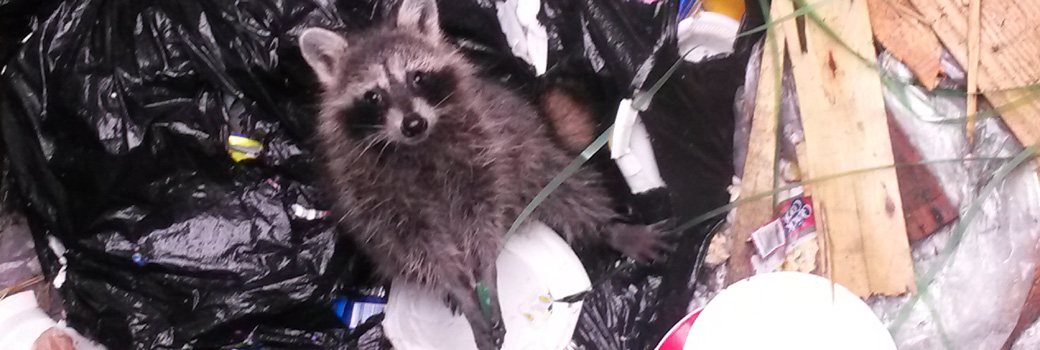- Greenville Educational Article of the Month - Raccoons
Raccoons
One of the most adorable and quirky of all the North American mammals is the raccoon. With its mask around its eyes and its colorful striped tail, the raccoon has been a source of amusement for generations. It was, in fact, one of the most talked about discoveries among Europeans as the people moved further into the American landscape.
While they are fun animals for sure, they are also quite a handful in other areas. Raccoons can be a real challenge and because of the large number of diseases they can carry, they can also be a real danger. What many people do not realize is that there is more to the South Carolina raccoon than many would think.
Raccoons range from about 16 to 28 inches long and can weigh as much as 20 pounds. Most of the smaller species of raccoons are found in the South Florida area, while larger ones are found in the Midwest. What people most recognize about the South Carolina raccoon is its “bandit’s mask” that goes around its eyes. While “bandit” may be an apt description of the look, the name is even more fully augmented by the mischievous behavior of most raccoons. These are creatures that love to get into trouble, and that only adds to their legendary characterization.

While the mask is a cute aspect of the raccoon, there appears to be a purpose to the coloration. Apparently the mask reduces glare at night making it easier for the mammals to see in the dark. Raccoons are nocturnal animals, so any advantage they can gain in seeing better at night is most beneficial to them.
While raccoons walk on all fours, they are considered plantigrade animals. This means they can stand on their back legs while examining things with their front paws. They cannot walk in this way, but they can maintain incredible balance.
Raccoons have a very sensitive touch sense. They have five digits and retractable claws that are quite sharp and can do a lot of damage. They do not have a great deal of agility with their paws, but they can be quite quick when they need to be.
Raccoons usually exist with a mate, and have been known to congregate in groups. They are not as social as other Greenville mammal groups, but are not averse to living in numbers either. When they do congregate in groups they are usually not friendly toward outsiders.
Raccoons are omnivores, in that they will eat just about anything. Most of their diet consists of bugs and other insects, followed by a heavy diet of plants. However, raccoons will eat lots of different kinds of food. In this way they are much like pigs. Raccoons have been known to eat virtually everything they could find from a garbage can once they get the lid open.
Raccoon’s favorite diet item is fish and other underwater creatures. The Raccoons Latin name is Procyon lotor, because lotor is the Latin word for washer. Raccoons get this name because of their ability to search for food by dipping their hands in the water.
Raccoons live to be about 20 years old at most. The average life expectancy in the wild is about three years, primarily because they have limited abilities to defend themselves. They also are quite prone to illness.
Raccoons are indigenous to North America, but over the last hundred years many cultures have tried to introduce them into their society. In the 1930s Russia brought raccoons to try to populate the country with them. The results were not positive. Japan added 1500 in 1977 and they are still thriving today. 285 raccoons were brought to Germany in 1934, and now over 200,00o exist in the German landscape.
While quite cute, South Carolina raccoons carry a lot of diseases and parasites that are quite harmful to humans. The most common of these is rabies. This is transmitted through bites, and is the primary reason while a Greenville raccoon bite is so dangerous.
Raccoons also carry a wide variety of pathogens, including distemper and epizootic virus. Some of the pathogens are not dangerous to humans, but have been known to kill off large numbers of raccoons in a given habitat. Unfortunately these illnesses are not just common with the North American species. They have also been found in German and Japanese species.
Raccoons also carry a wide variety of bacterial illnesses. These include leptospirosis, listeriosis, tetanus, and tularemia. These parasites weaken the immune systems of the animals. They also carry a great many varieties of roundworms that are easily passed to other Greenville animals through the raccoon’s waste. This is why it is imperative that if you have to clean the waste you ensure you wear gloves and a mask to keep them parasites from transferring to you. Some eat raccoon and if not properly cooked can pass Trichinella.
To learn more about our services, visit the Greenville wildlife removal home page.

